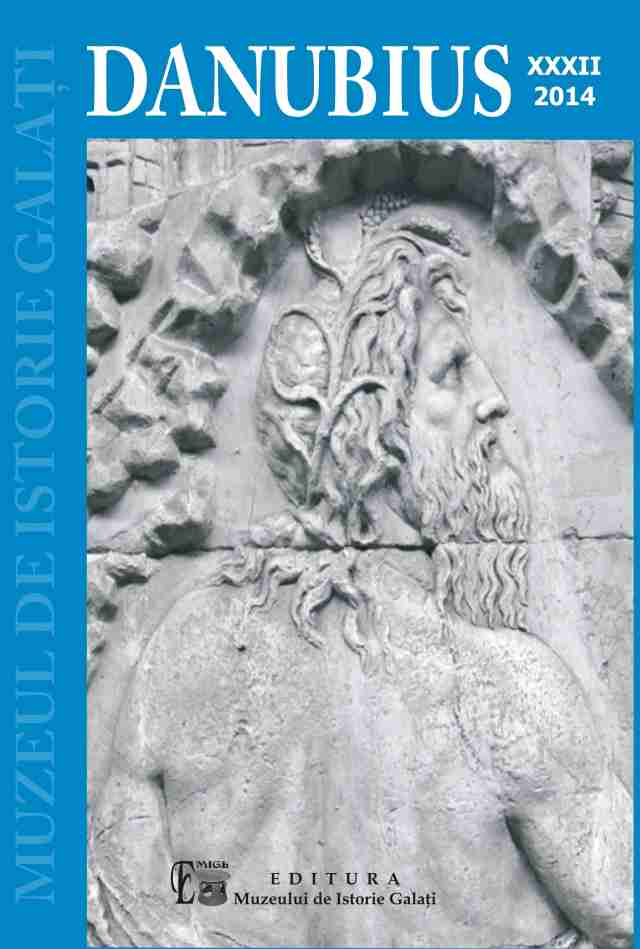Artefacte din materii dure animale descoperite la Negrileşti (jud. Galaţi), în 2013
Osseous Materials Artefacts Discovered at Negrileşti (Galaţi County), in 2013
Author(s): Corneliu Beldiman, Costel Ilie, Diana Maria SztancsSubject(s): Archaeology
Published by: Muzeul de Istorie „Paul Păltănea” Galaţi
Keywords: awl; arrow head; bone; Moldova; Negrileşti; Noua culture; osseous materials artefacts; prehistoric technology; spoon; Starčevo-Criş culture.
Summary/Abstract: The article presents the data issued from the analysis regarding a collection comprising 4 artefacts made of osseous materials (bone). These belong to the Starčevo-Criş (3) and Noua (1) cultures. The artefacts were recovered during the 2013 excavation campaign in Negrileşti comm., Galaţi County – Curtea Şcolii (Schoolyard) site (NGS). The typological distribution of the assemblage was presented according to Beldiman 2007 Typology: I. Tools (awls, bone spoon); II Weapons (arrow head). The quantitative distribution of the typological groups and types across cultures is the following: pieces dated from Starčevo-Criş culture are exclusively tools (I A – Awls, N = 2; I F – Bone spoon, N = 1); a piece dated from Noua culture: bone arrowhead (II B – arrow head, N = 1). With respect to the raw materials used, the Starčevo-Criş assemblage comprises pieces made from sheep (N = 2) and cattle long bones (N = 1). The Noua piece is made from a cattle long bone diaphysis fragment. As technical procedures identified while analyzing the Early Neolithic artefacts, we may mention: débitage using direct percussion/splitting probably with the help of a lithic axe or a lithic blade; the axial grooving and the abrasion were probably also applied. The multidirectional abrasion (axial, oblique, transversal) was the shaping technique applied. Due to the local procurement of the raw materials, all the pieces were produced in site, probably during some household activities. The observations mentioned above prove the practice of some household activities like: osseous materials and hides manufacture; clothes manufacture; use of vegetal and animal fibres for knitting; preparing flour and eating food with bone spoons etc. The piece dated from Noua Culture was manufactured by applying the following procedures: fracturing, splitting, notching or abrasion. The use of bow and arrow in site is thus clearly attested. Other similar pieces were recovered in the sites from Cavadineşti, Gârbovăţ, Lichitişeni. The hypothesis regarding the practice of routine household activities like osseous materials artefacts manufacture (bone) can also be stated. The typological analysis of osseous materials artefacts discovered at Negrileşti – „Curtea Şcolii” in 2013 allowed us to: mention some benchmarks regarding the typology of osseous materials artefacts dated from Starčevo-Criş and Noua cultures from Southern Moldova; identify some household activities practiced in the site and which were illustrated by specific artefacts related to osseous materials industry, hides/vegetal and animal fibres manufacture etc.; use of bone spoons, specific for Starčevo-Criş culture. The use of bow and arrow with bone head was for the first time attested in the site. The studied assemblage offers new typological, palaeo-technological and chrono-cultural markers important for a complex and extensive approach of Neolithic and Bronze Age manifestations from the Southern part of Moldova.
Journal: Danubius
- Issue Year: XXXII/2014
- Issue No: 1
- Page Range: 9-27
- Page Count: 19
- Language: Romanian

